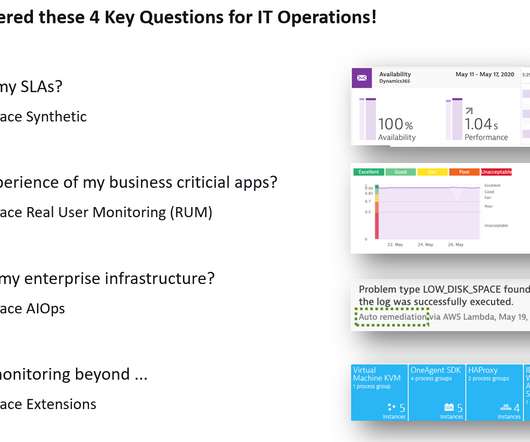4 steps to modernize your IT service operations with Dynatrace
Dynatrace
JUNE 30, 2020
In my role as DevOps and Autonomous Cloud Activist at Dynatrace, I get to talk to a lot of organizations and teams, and advise them on how to speed up delivery while also increasing the delivery in order to minimize the impact on operations. We came up with list of four key questions, then answered and demoed in our recent webinar.












Let's personalize your content